|
|
 |
|
|
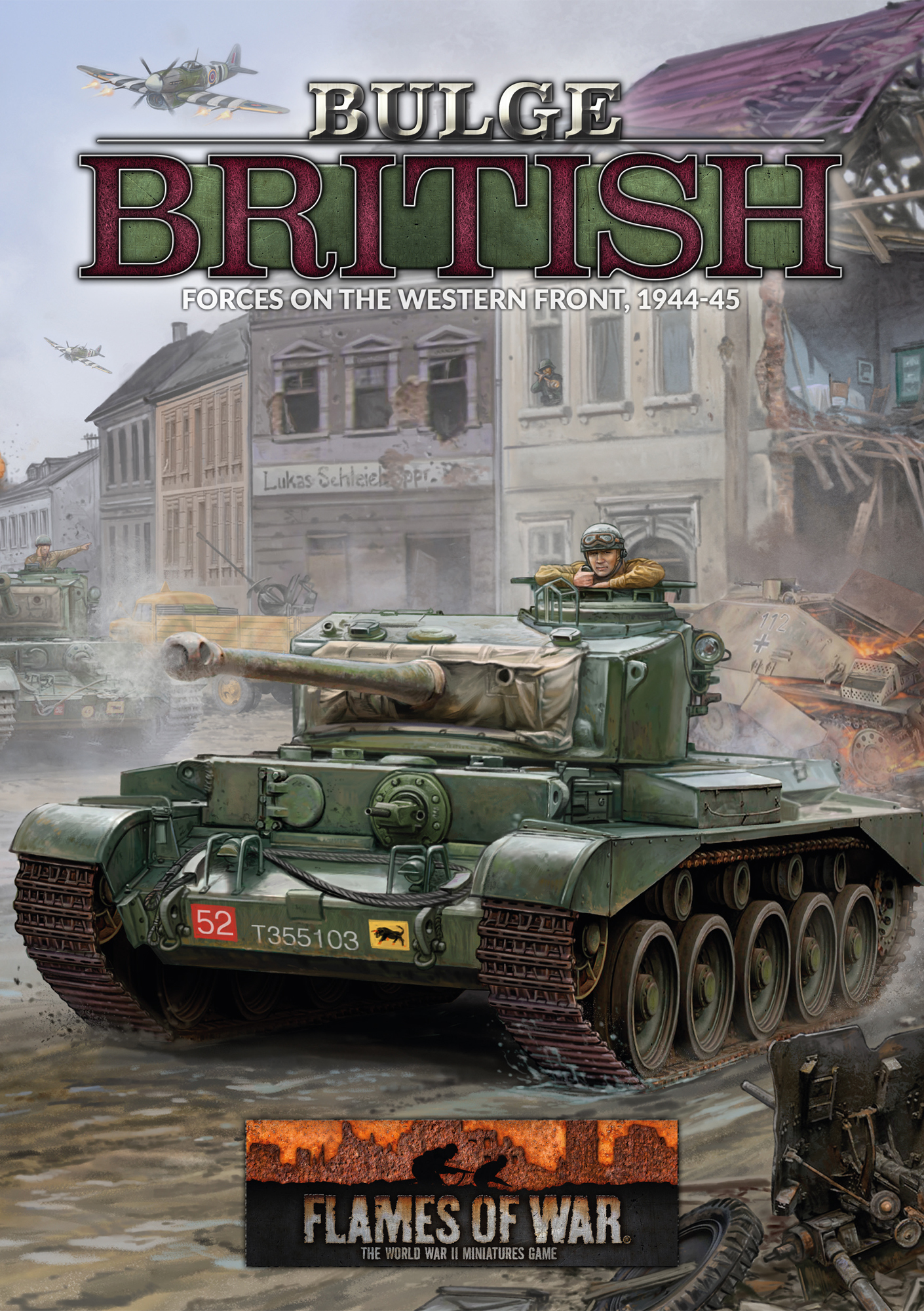 |
12th Manitoba Dragoons
By John (Jock) Buckmaster
The Manitoba Dragoons have a history dating back to the 1885 Northwest rebellion in Canada and had served with distinction during some of the worst battles of WWI. After WWI, they were a reserve regiment until 10 May 1941 when they were mobilized as the 18th Manitoba Reconnaissance Battalion. They were re-designated the 18th (Manitoba) Armour Car Regiment in January of 1942 and embarked for training in England in July of that year. As the regiment was previously a reserve regiment, reservists still had the older Manitoba Dragoons uniform emblems, while others had the 18th Armoured Car emblems.
|
|
Officers noted the lack of uniformity as well as the tension the loss of the original name created. In December of 1942, the regiment was re-designated again, this time as the 18th Armoured Car Regiment (12th Manitoba Dragoons). During this time, many of the troops took to inventing new (and rude) lyrics to the regimental march, ‘Col. Bogey,’ as a way of expressing frustration at Army bureaucracy.
The Dragoons arrived in Normandy on 6 July 1944. Due to battlefield conditions and intense fighting, the bulk of the first month in France was spent dismounted, fighting as an infantry unit. They received Battle Honours for their role at Falaise and Falaise Road.
|
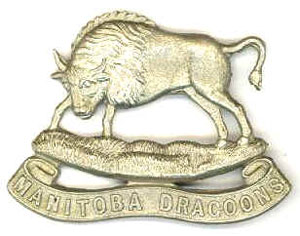 |
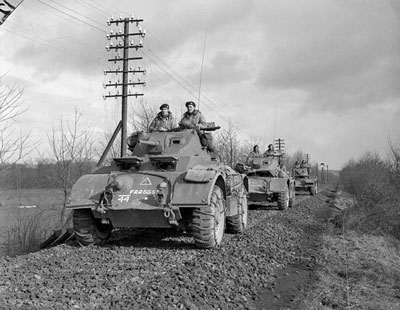 |
Once the troops were able to mount up again, they fanned out ahead of the main Canadian contingent, through Chambois, where they earned battle honours again, toward Le Havre and the Seine. Multiple reports of friendly troops mistaking the Staghounds for panzers were submitted, and the regiment was nearly fired upon by friendly troops more than once. The open terrain after Falaise allowed the Dragoons to perform their duties as trained, the large Staghound armoured cars crisscrossing open ground and seeking routes, enemy and bridges. As the Dragoons were often 50 or more kilometres ahead of the main troops, they were often the first ‘liberators’ seen by the locals, and the impromptu liberation festivities often proved more of a delay than enemy troops. |
|
By the time the Dragoons reached Belgium, they had already started carrying enough stowage to seriously hamper escape from the vehicles if needed, much to the consternation of high command. Niewport, Ostend and Bruges were all liberated by the Dragoons, with Bruges and Ostend naming roads and squares after the regiment.
By late 1944, the momentum of the Canadian push had slowed. The front-line between German and Canadian troops was now the Maas River, and for three months the Dragoons patrolled the river in one of the coldest, wettest, winters to hit the region. The regiment was the first to cross the Rhine and head into Holland, where it liberated multiple cities, including Lichtenvoorde, Leeuwarden, and Almelo before heading into Germany.
Apparently the Germans were as bad at vehicle recognition as the allies. A lone Staghound, whose crew had emptied all of their ammunition chasing down German infantry, found themselves heading straight for a German Tiger tank at night.
|
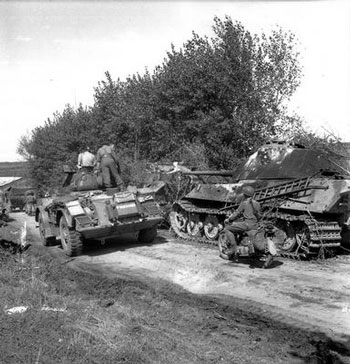 |
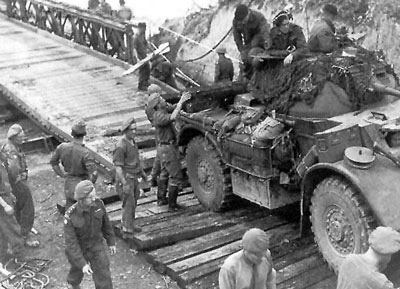 |
The Tiger pulled aside to let them past and they waited, hiding inside a village until the regiment could reach them in the morning.
Heading into the Hochwald forest proved difficult for the regiment, as the armoured cars did not fare well in the restricted terrain. The weight of the Staghounds proved to be a problem when recovering bogged-down vehicles, and 40 LAD ‘liberated’ a German village to get horses to pull two 14-ton Staghounds from the mud. The regiment continued through Bad Zwischenahn, and further into the Hochwald forest. The Dragoons received further battle honours for the Rhineland, Bad Zwischenahn, and North-West Europe, 1944-1945, as well as being honoured in a parade before Queen Wilhelmina in Amsterdam.
|
| Many Dragoons members remained in Europe until October of 1945. In 1946, the regiment was placed on the supplementary order of battle and returned to being a reserve regiment. |
|
Equipment and Vehicles
The ‘sergeant’s car’ of each Troop (3 vehicles), carried two 12-foot sections of ‘number 9 track’ to assist in crossing mud, destroyed bridges, craters and mined roads. This allowed the Dragoons to travel without needing Engineers in all but the most extreme circumstances.
While recce forces were not expected to fight, the Dragoons often ended up in situations where they were required to shoot their way out of trouble.
|
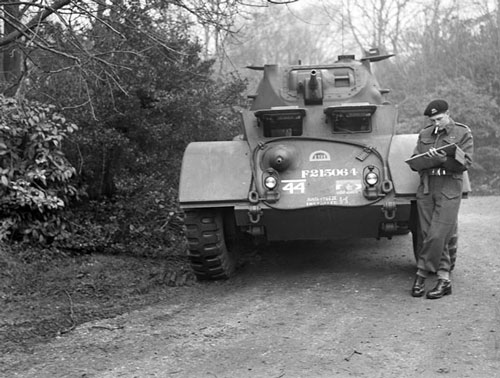 |
|
By April 1945, the Heavy Troops of each Squadron had been upgraded to the Staghound III, which swapped the normal turret for a Crusader III turret. The front facing machine gun was removed, and the jettisonable fuel tanks replaced with stowage compartments.
|
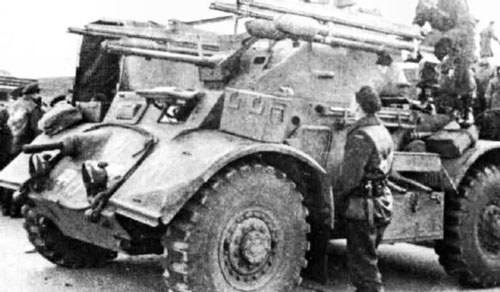 |
Other attempts to up-gun the Staghounds were made. The Dragoons tried out two rocket systems attached to the turret. One was based on the Land Mattress platform, and damaged the rear fenders when fired, the other consisted of two 60-pound rockets on rails mounted to each side of the turret. Neither was used in the field
The Canadian army also produced a rear-link variant, with all weapons removed and extra radio equipment installed in the turret. |
|
This was used for relaying information, as the Dragoons could often be outside of normal communication range. Lt. Gen. Guy Simonds of 2 Canadian Corps, had ‘Charger,’ a Staghound with the turret removed and replaced with a windscreen and convertible canvas top. Either of these vehicles would make for a great objective markers in games of Flames Of War.
In Flames Of War
You can field the Mantoba Dragoons Armoured Car Squadron in Bulge: British using the 12th Manitobe Dragoons Staghound command card.
|
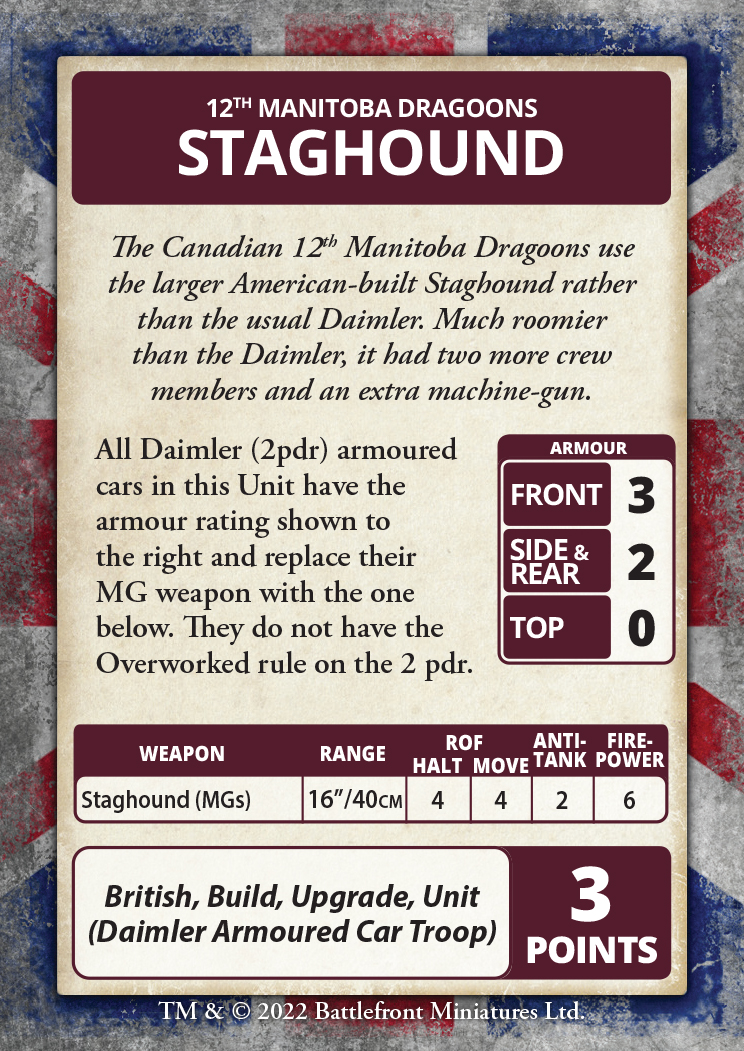 |
Last Updated On Friday, October 14, 2022 by Wayne at Battlefront
|
|
|